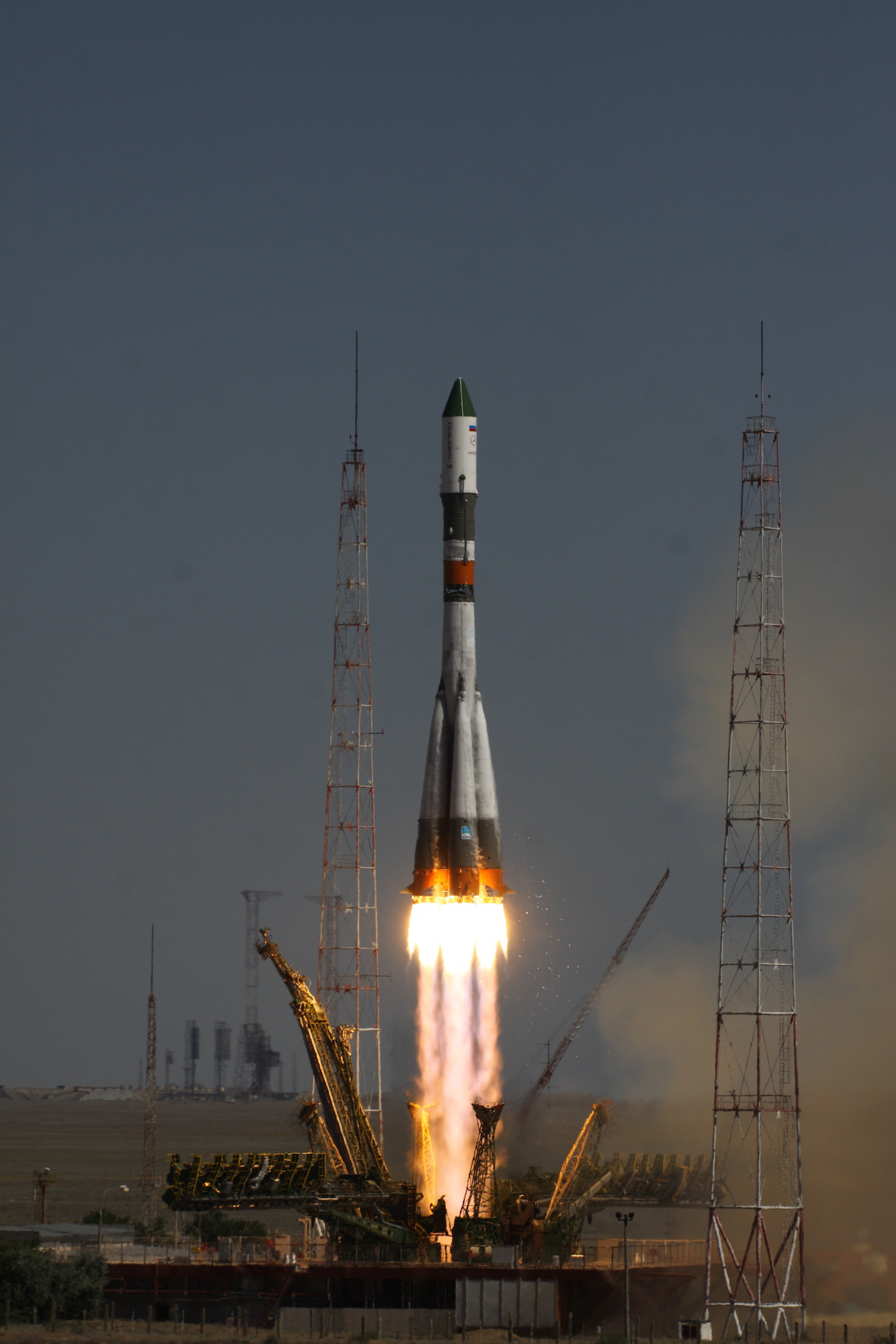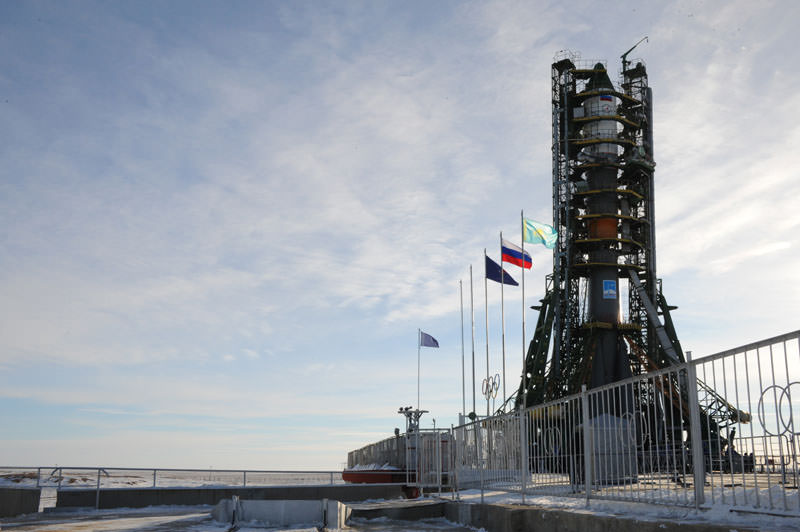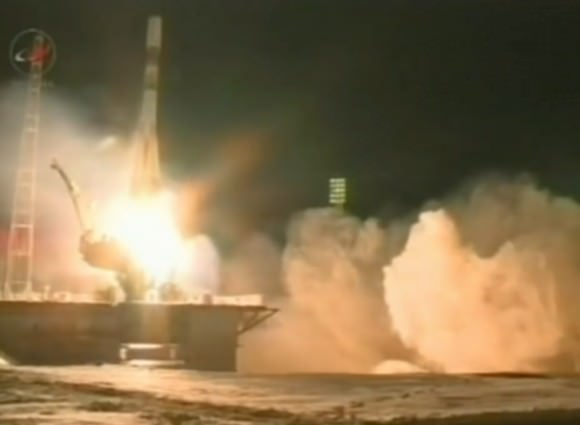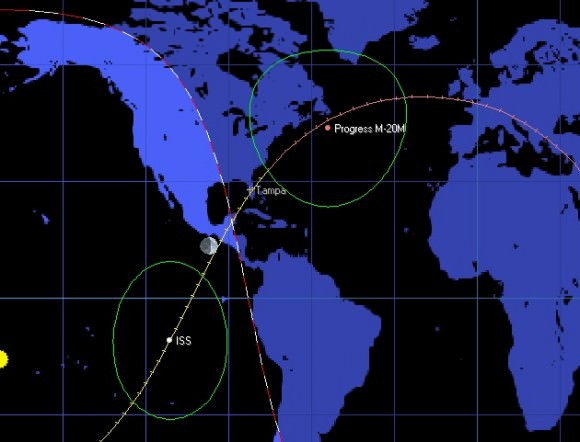Blastoff of the Russian Progress 60 resupply ship to the ISS from the Baikonur Cosmodrome on July 3, 2015. Credit: Roscosmos
Story updated[/caption]
A sigh of relief was heard worldwide with today’s (July 3) successful launch to orbit of the unmanned Progress 60 cargo freighter atop a Soyuz-U booster from the Baikonur Cosmodrome, signifying the restoration of Russia’s critical cargo lifeline to the International Space Station (ISS), some two months after the devastating launch failure of the prior Progress 59 spaceship on April 28.
Friday’s triumphant Progress launch also comes just five days after America’s cargo deliveries to the ISS were put on hold following the spectacular failure of a commercial SpaceX Falcon 9 rocket launched from the Florida Space Coast on Sunday, June 28, carrying the unpiloted SpaceX Dragon CRS-7 which broke up in flight.
The Progress 60 resupply ship, also known as Progress M-28M, was loaded with over three tons of food, fuel, oxygen, science experiments, water and supplies on a crucial mission for the International Space Station crew to keep them stocked with urgently needed life support provisions and science experiments in the wake of the twin launch failures in April and June.
The Soyuz-U carrier rocket launched Progress into blue skies at 10:55 a.m. local time in Baikonur (12:55 a.m. EDT) from the Baikonur Cosmodrome in Kazakhstan. The launch was webcast live on NASA TV.
“Everything went by the book,” said NASA commentator Rob Navias during the webcast. “Everything is nominal.”
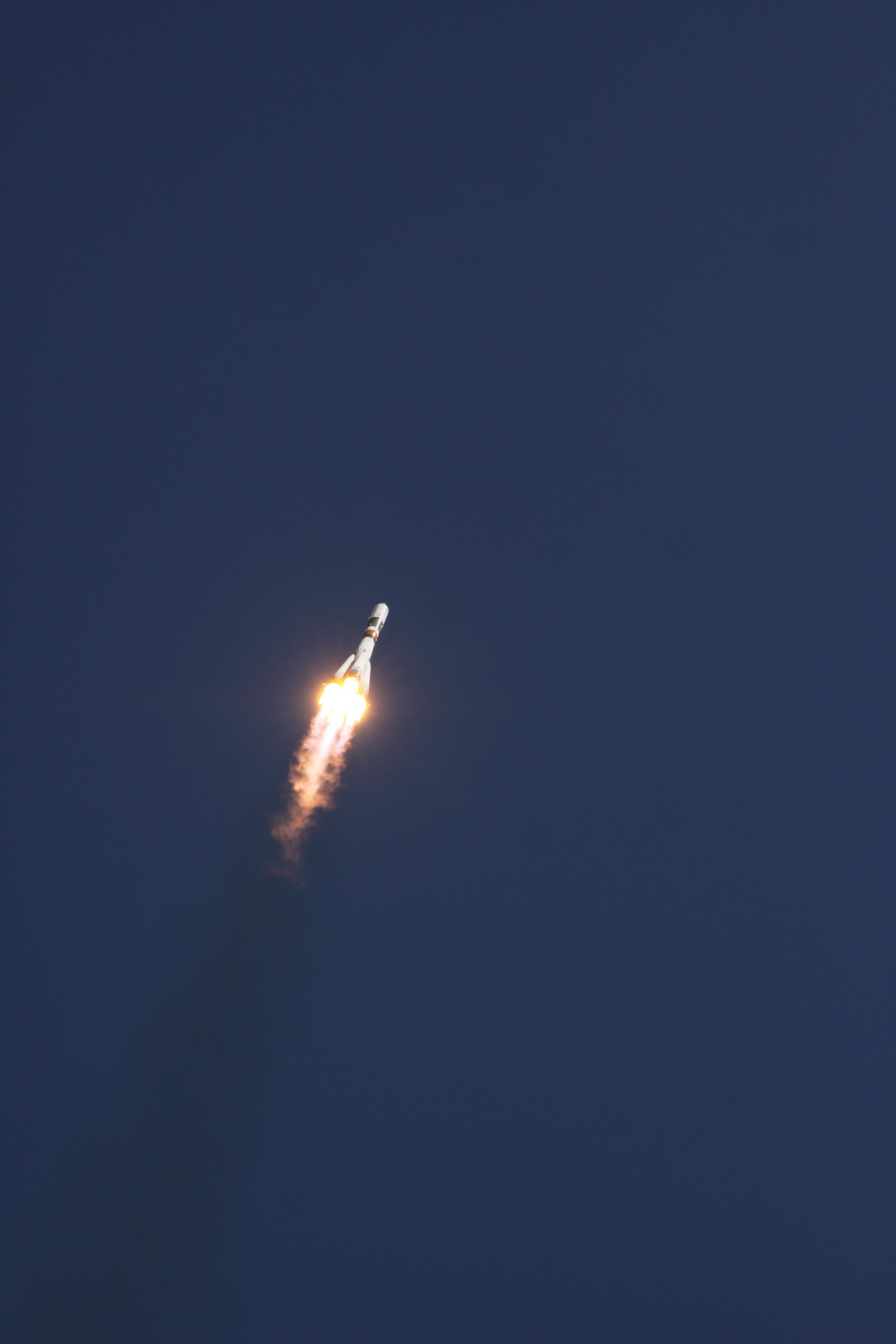
The International Space Station was flying about 249 miles over northwestern Sudan, near the border with Egypt and Libya, at the moment of liftoff. Note: See an exquisite photo of the Egyptian pyramid photographed from the ISS in my recent story – here.
After successfully separating from the third stage Progress reach its preliminary orbit less than 10 minutes after launch from Baikonur and deployed its solar arrays and navigational antennas as planned.
Live video was received from Progress after achieving orbit showing a beautiful view of the Earth below.
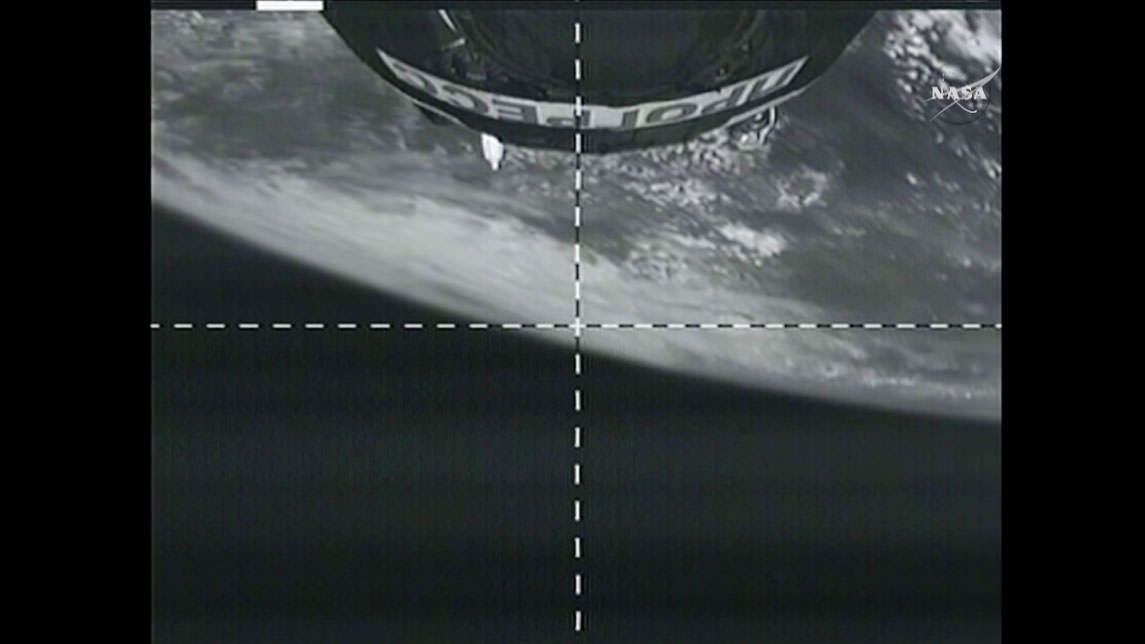
A two day chase of 34 orbits of Earth over the next two days will bring the cargo craft to the vicinity of the station for a planned docking to the Russian segment of the orbiting laboratory at 3:13 a.m. Sunday, July 5.
NASA TV will provide live coverage of the arrival and docking operation to the Pirs Docking Compartment starting at 2:30 a.m. EDT on Sunday, July 5.
Watch live on NASA TV and online at http://www.nasa.gov/nasatv
NASA astronaut Scott Kelly and Russian cosmonauts Mikhail Kornienko and Gennady Padalka are currently living and working aboard the station as the initial trio of Expedition 44 following the safe departure and landing of the three person Expedition 43 crew in mid June.
Kelly and Kornienko comprise the first ever 1 Year Crew to serve aboard the ISS and are about three months into their stay in space.
In the span of just the past eight months, three launches of unmanned cargo delivery runs to the space station have failed involving both American and Russian rockets.
The cargo ships function as a railroad to space and function as the lifeline to keep the station continuously crewed and functioning. Without periodic resupply by visiting vehicles from the partner nations the ISS cannot continue to operate.
The Orbital Sciences Antares/Cygnus Orb 3 mission exploded in a massive and frightening fireball on October 28, 2014 which I witnessed from the press site from NASA Wallops in Virginia.
The Russian Soyuz/Progress 59 mission failed after the cargo vessel separated from the Soyuz booster rockets third stage and spun wildly out of control on April 28, 2015 and eventually crashed weeks later during an uncontrolled plummet back to Earth over the ocean on May 8. The loss was traced to an abnormal third stage separation event.
Roscosmos, the Russian Federal Space Agency, switched this Progress vehicle to an older version of the Soyuz rocket which had a different third stage configuration that was not involved in the April failure.
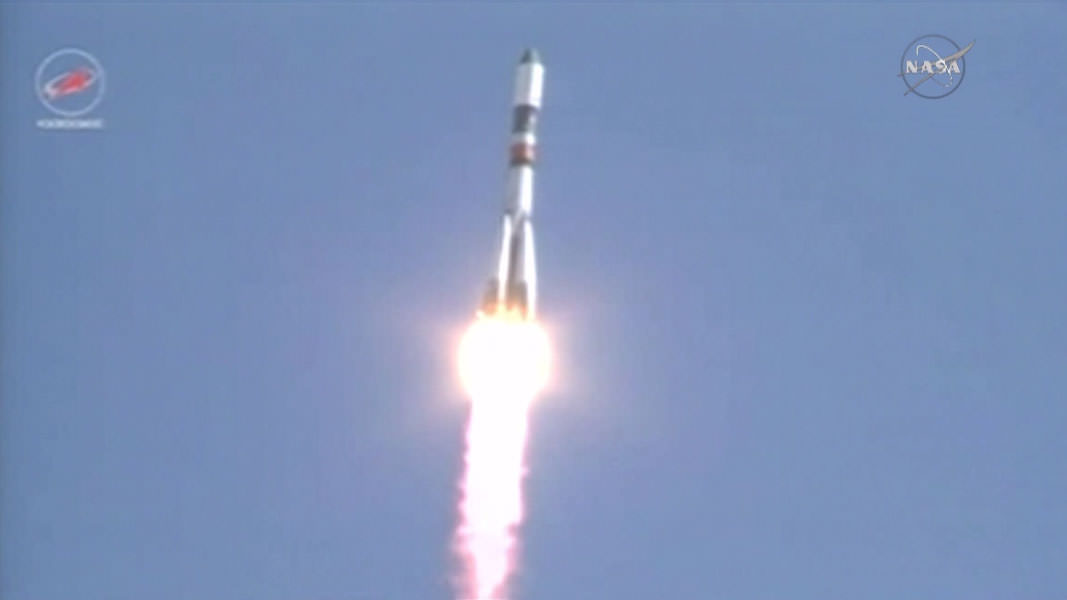
Russian officials decided to move up the launch by about a month from its originally planned launch date in August in order to restock the station crew with critically needed supplies as soon as practical.
Following Sundays SpaceX cargo launch failure, the over 6100 pounds of new supplies on Progress are urgently needed more than ever before. Loaded aboard are 1,146 pounds (520 kg) of propellant, 105 pounds (48 kg) of oxygen, 926 pounds (420 kg) of water and 3,071 pounds (1393 kg) pounds of crew supplies, provisions, research equipment, science experiments, tools and spare parts and parcels for the crew.
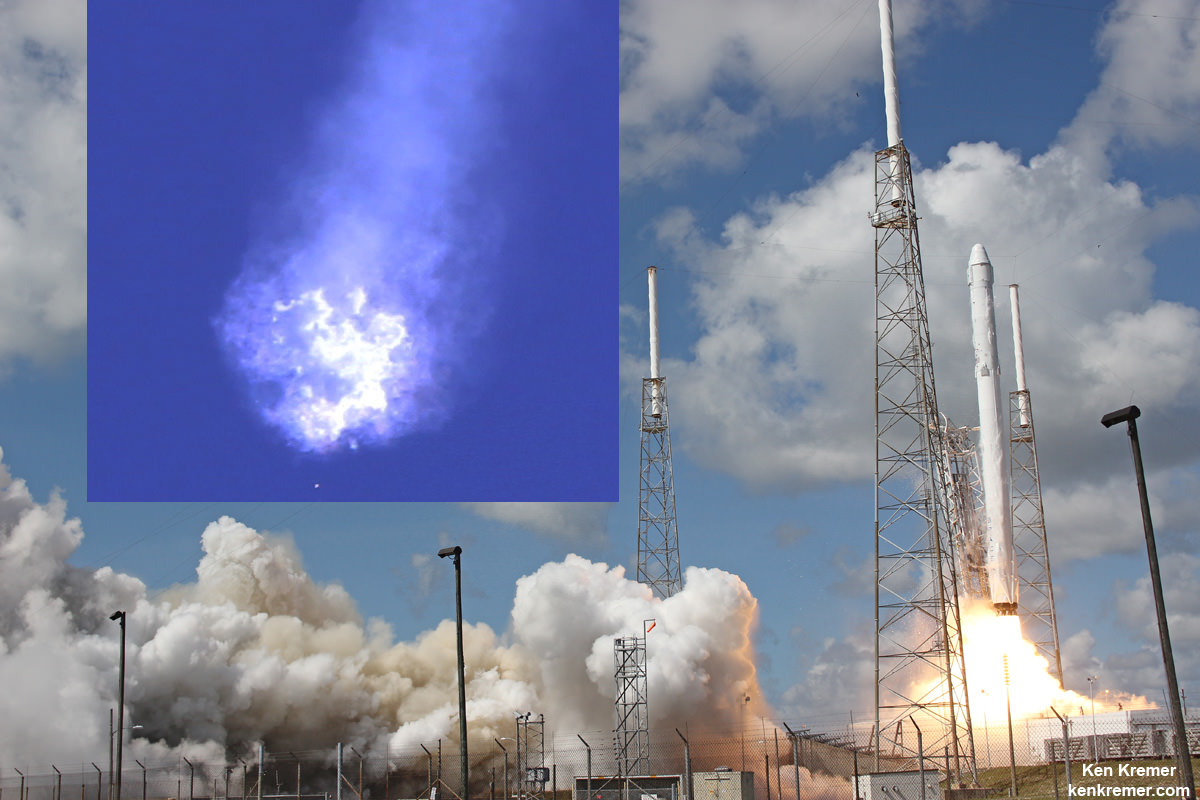
In the wake of the trio of American and Russian launch failures, the crews current enjoy only about four month of supplies reserves compared to the more desirable six months stockpile in case of launch mishaps.
Progress 60 will extend the station supplies by about a month’s time.
The SpaceX CRS-7 Dragon was loaded with over 4,000 pounds (1987 kg) of research experiments, an EVA spacesuit, water filtration equipment, spare parts, gear, computer equipment, high pressure tanks of oxygen and nitrogen supply gases, food, water and clothing for the astronaut and cosmonaut crews comprising Expeditions 44 and 45.
These included critical materials for the science and research investigations for the first ever one-year crew to serve aboard the ISS – comprising Kelly and Kornienko.
The Dragon was also packed with the first of two new International Docking Adapters (IDS’s) required for the new commercial crew space taxis to dock at the ISS starting in 2017.
The three cargo launch failures so close together are unprecedented in the history of the ISS program over the past two decades.
The next cargo ship now slated to launch is the Japanese HTV-5 on August 16.
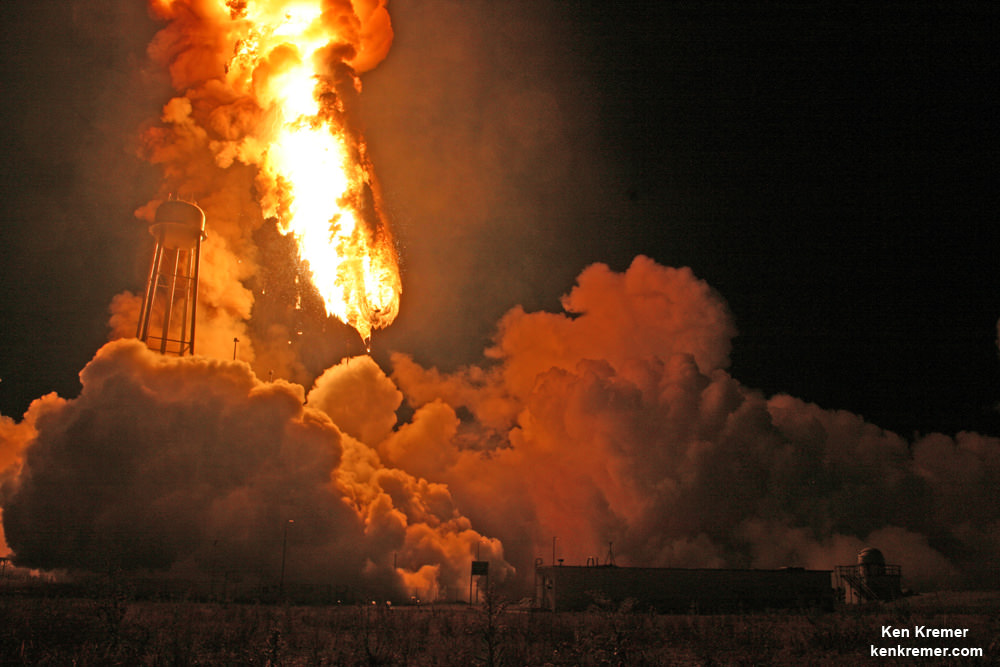
Stay tuned here for Ken’s continuing Earth and planetary science and human spaceflight news.

